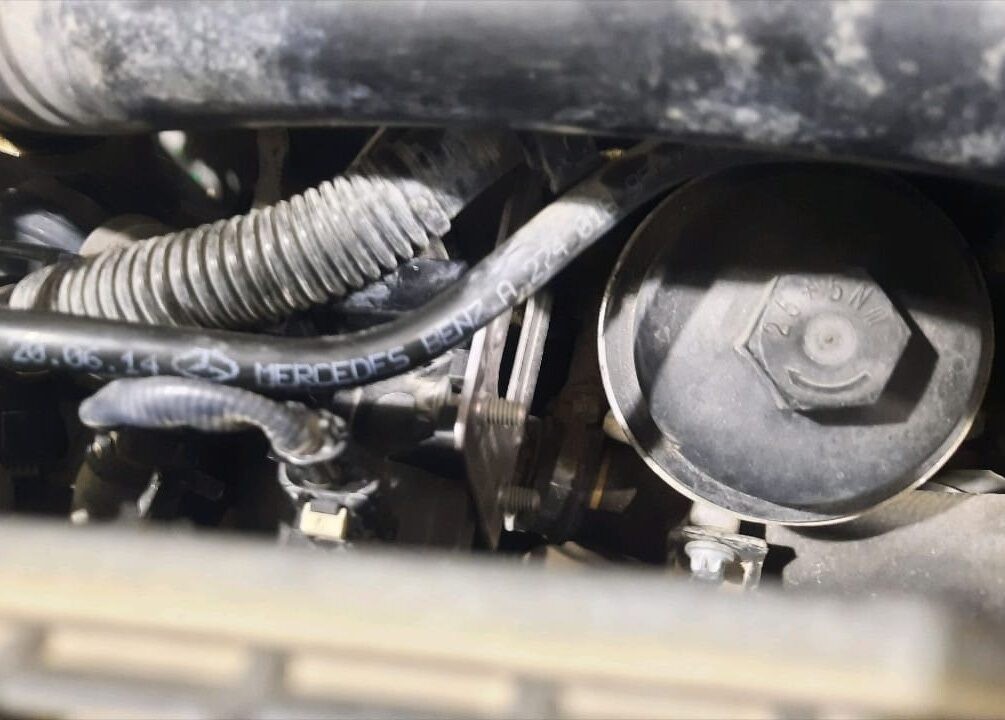The Mercedes-Benz Diagnostic Trouble Code (DTC) P029921 indicates “turbocharger boost pressure low.” While seemingly an engine-related issue, this fault code can significantly impact transmission performance, often leading to delayed shifting, especially at higher speeds. This article examines a case study of a Mercedes-Benz C300 W205 exhibiting delayed shifting and DTC P029921, outlining the diagnostic process and solution.
Diagnosing DTC P029921 and Transmission Delay
A Mercedes-Benz C300 W205 presented with complaints of delayed gear changes at high speeds. A diagnostic scan revealed DTC P029921, pointing to low turbo boost pressure. Notably, no check engine light was illuminated. Initial test drives confirmed sluggish acceleration and delayed shifting.
Investigating the Turbocharger System
Given the DTC P029921, the investigation focused on the turbocharger system. The wastegate valve, responsible for regulating boost pressure, was checked first. A vacuum suction test revealed proper wastegate diaphragm and control rod function, ruling out a faulty wastegate.
Subsequently, an active test of the boost pressure control transducer was performed. The control rod failed to move, indicating a malfunctioning transducer. This component is crucial for managing the vacuum lines that control turbo pressure.
Tracing the Vacuum System
With the boost pressure control transducer implicated, the next step was to examine the vacuum system. Disconnecting the intake to transducer vacuum pipe and testing for suction at the transducer end revealed no suction, confirming a vacuum line issue.
Identifying the Vacuum Leak
A thorough inspection of the vacuum line, tracing it to the intake manifold, revealed the culprit: a disconnected pipe at the intake manifold connection within the intercooler housing.
Rectifying the Problem
The disconnected pipe was securely reattached to the intake manifold, and all components were reassembled. After clearing the DTCs, another active test of the boost pressure control transducer showed proper control rod movement, confirming the problem was resolved.
Confirming the Repair
A post-repair test drive demonstrated restored vehicle performance, smooth gear shifts at all speeds, and complete resolution of the transmission delay. The initial sluggish acceleration was eliminated.
Conclusion: P029921 and its Impact on Shifting
This case study illustrates how a seemingly isolated engine issue, low turbo boost pressure (DTC P029921), can significantly affect transmission performance, causing delayed shifting. It underscores the importance of a comprehensive diagnostic approach, considering the interconnectedness of vehicle systems. In this instance, addressing the vacuum leak and restoring proper turbo boost pressure resolved the transmission issue. Regular maintenance of the vacuum system and turbocharger components can help prevent similar problems.


